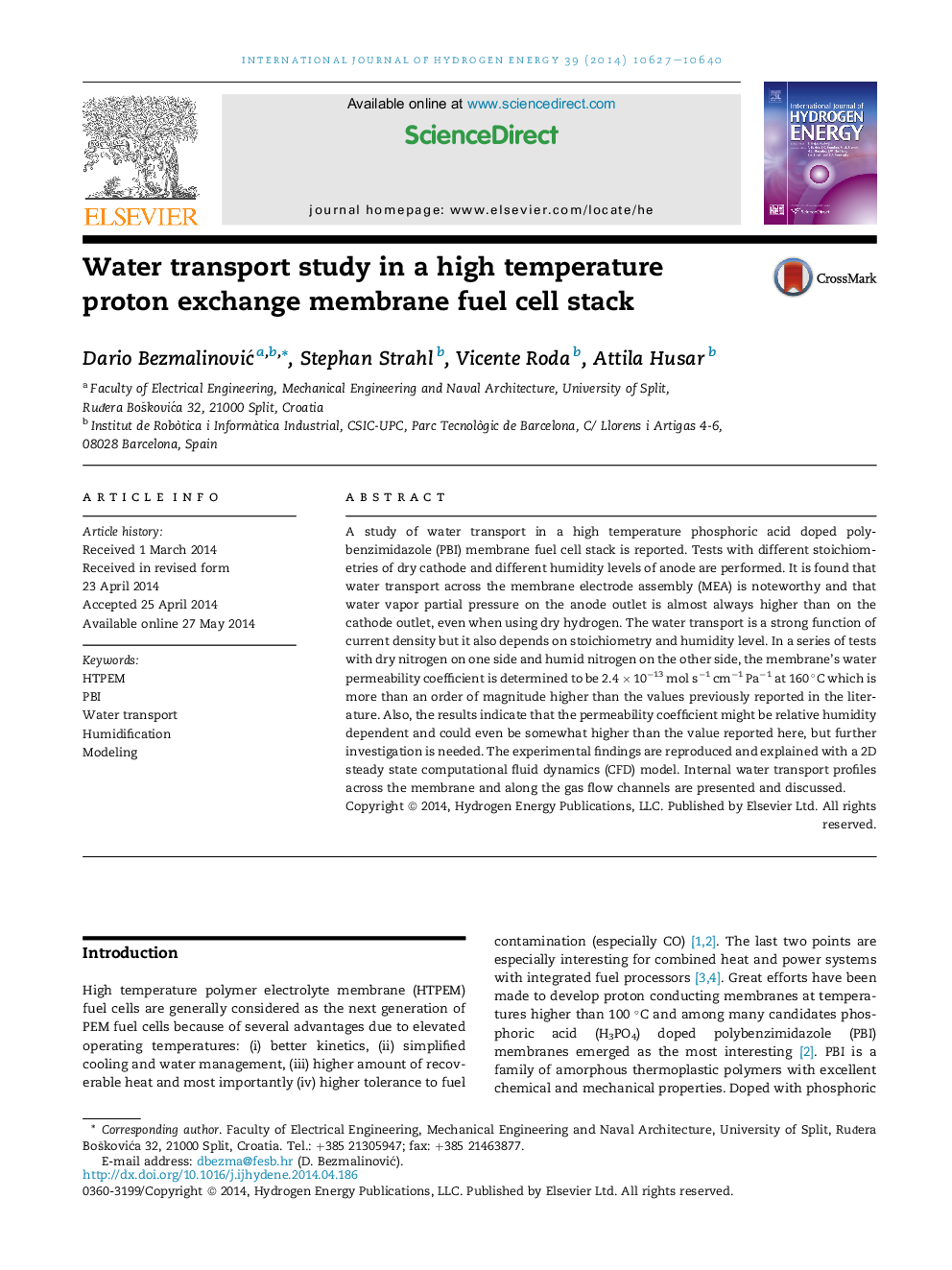| Article ID | Journal | Published Year | Pages | File Type |
|---|---|---|---|---|
| 1276189 | International Journal of Hydrogen Energy | 2014 | 14 Pages |
•Water transport in a 12 cell PBI-based HTPEM fuel cell stack is investigated.•Even with dry gases up to 10% of water leaves the stack through the anode outlet.•Water transport from cathode to anode rises with current density.•Anode outlet water concentration is almost always higher than on the cathode.•Membrane water permeability is determined to be 2.4 × 10−13 mol s−1 cm−1 Pa−1 at 160 °C.
A study of water transport in a high temperature phosphoric acid doped polybenzimidazole (PBI) membrane fuel cell stack is reported. Tests with different stoichiometries of dry cathode and different humidity levels of anode are performed. It is found that water transport across the membrane electrode assembly (MEA) is noteworthy and that water vapor partial pressure on the anode outlet is almost always higher than on the cathode outlet, even when using dry hydrogen. The water transport is a strong function of current density but it also depends on stoichiometry and humidity level. In a series of tests with dry nitrogen on one side and humid nitrogen on the other side, the membrane's water permeability coefficient is determined to be 2.4 × 10−13 mol s−1 cm−1 Pa−1 at 160 °C which is more than an order of magnitude higher than the values previously reported in the literature. Also, the results indicate that the permeability coefficient might be relative humidity dependent and could even be somewhat higher than the value reported here, but further investigation is needed. The experimental findings are reproduced and explained with a 2D steady state computational fluid dynamics (CFD) model. Internal water transport profiles across the membrane and along the gas flow channels are presented and discussed.
